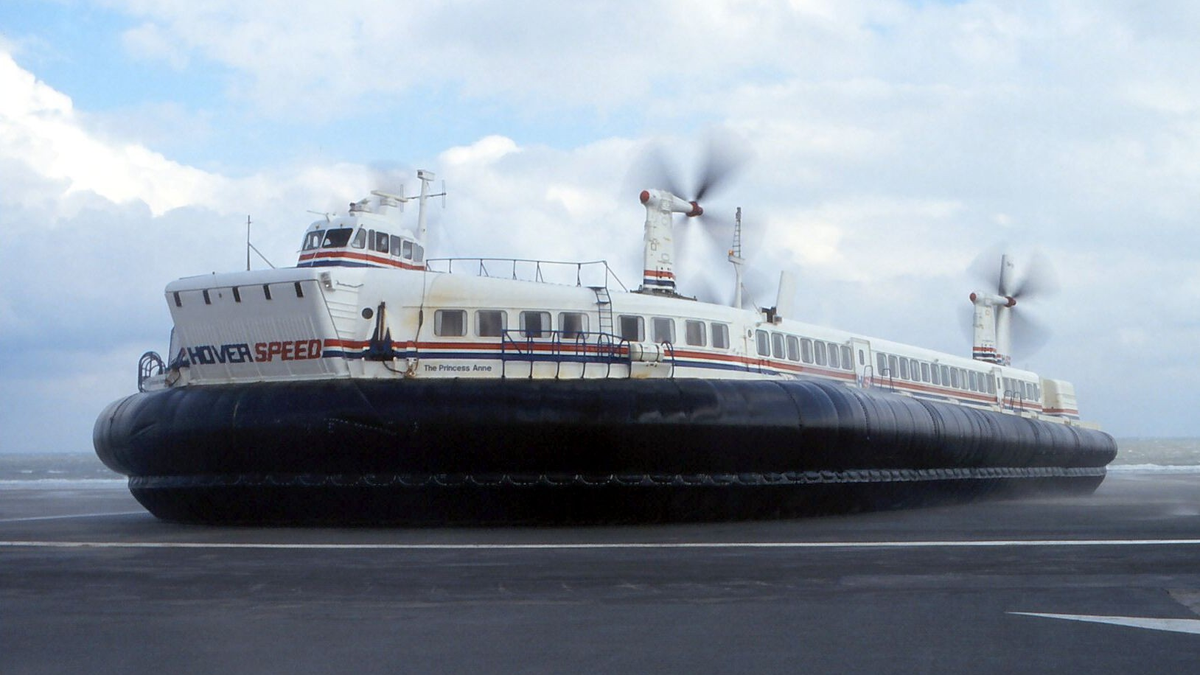We’re all familiar with cars, planes, trains and boats as being the most popular forms of transport the world over. But while boats and ferries have long proven their worth at crossing large bodies of water, there’s another way of navigating the world’s seas, lakes and rivers: the hovercraft. And for almost 30 years, the largest passenger hovercraft in the world operated between the UK and France.
The hovercraft in question was the SR.N4, which was built by the British Hovercraft Corporation and given the catchy name of the Princess Anne. It ran from 1968 until 2000 between Dover in the UK and Calais in France, making the 27-mile trip in roughly 35 minutes.
To make the crossing, the Princess Anne was powered by four massive Rolls-Royce marine engines, which provided the thrust to lift the hovercraft off the ground and power it across the sea at speeds of up to 60 miles per hour. When it hit those speeds, the Princess Anne would consume fuel at a rate of 1,000 gallons per hour.
While draining its tanks between Britain and France, the 2,200 pound hovercraft could carry up to 418 passengers and had space in its belly for up to 60 cars as well. This capacity made it the largest passenger hovercraft the world had ever seen.
Now, the British Film Institute has shared some old footage of the monster machine running the crossing. It shows how the cars would roll on and off the hovercraft, the way it lumbered off the dock in Dover and the sheer quantity of spray that would be thrown up as it sped across the Channel. What a machine.
Despite sounding like an incredible machine, it’s future was never secured. That massive fuel usage made it incredibly expensive to run and as it grew older it became increasingly hard to track down spare parts and keep the craft’s 12-ton skirt in working order.
Then as cheaper traditional ferry crossings began taking over the Channel crossing, the writing was on the wall for the Princess Anne. Finally, the craft undertook its final voyage back in 2000s.
The quick crossing gauntlet was taken up by a fleet of catamaran crafts, which took around 40 minutes to make the crossing. But ultimately, these were scrapped too as a result of higher costs and reduced demand.
This means that now, a crossing between the UK and France take as much as four times longer than the hovercraft could manage in the 1980s, depending on conditions.







